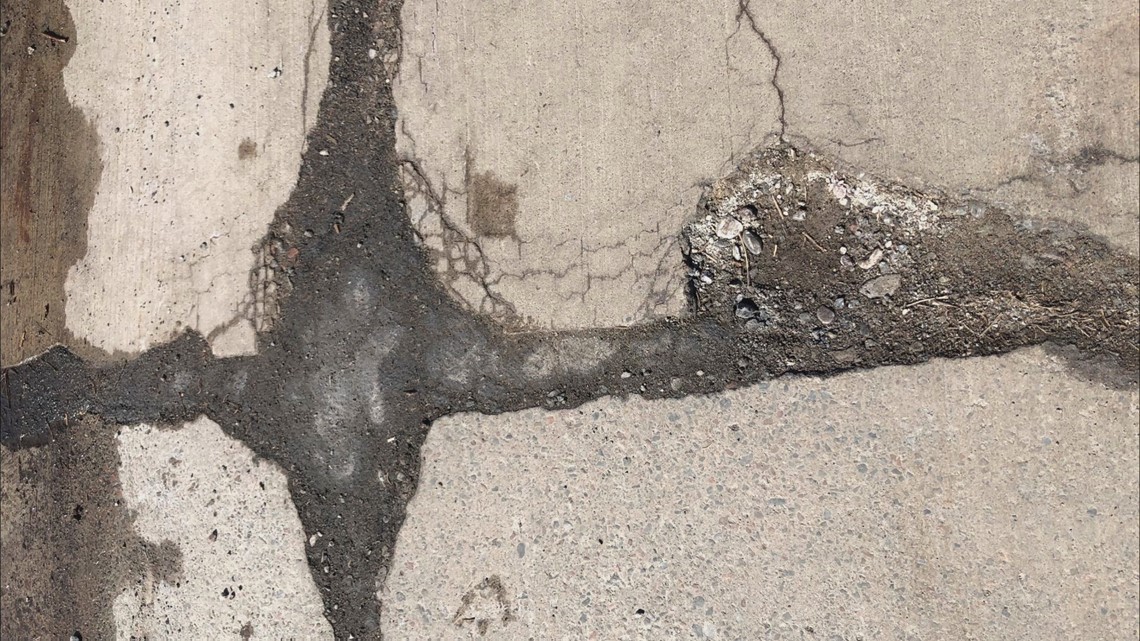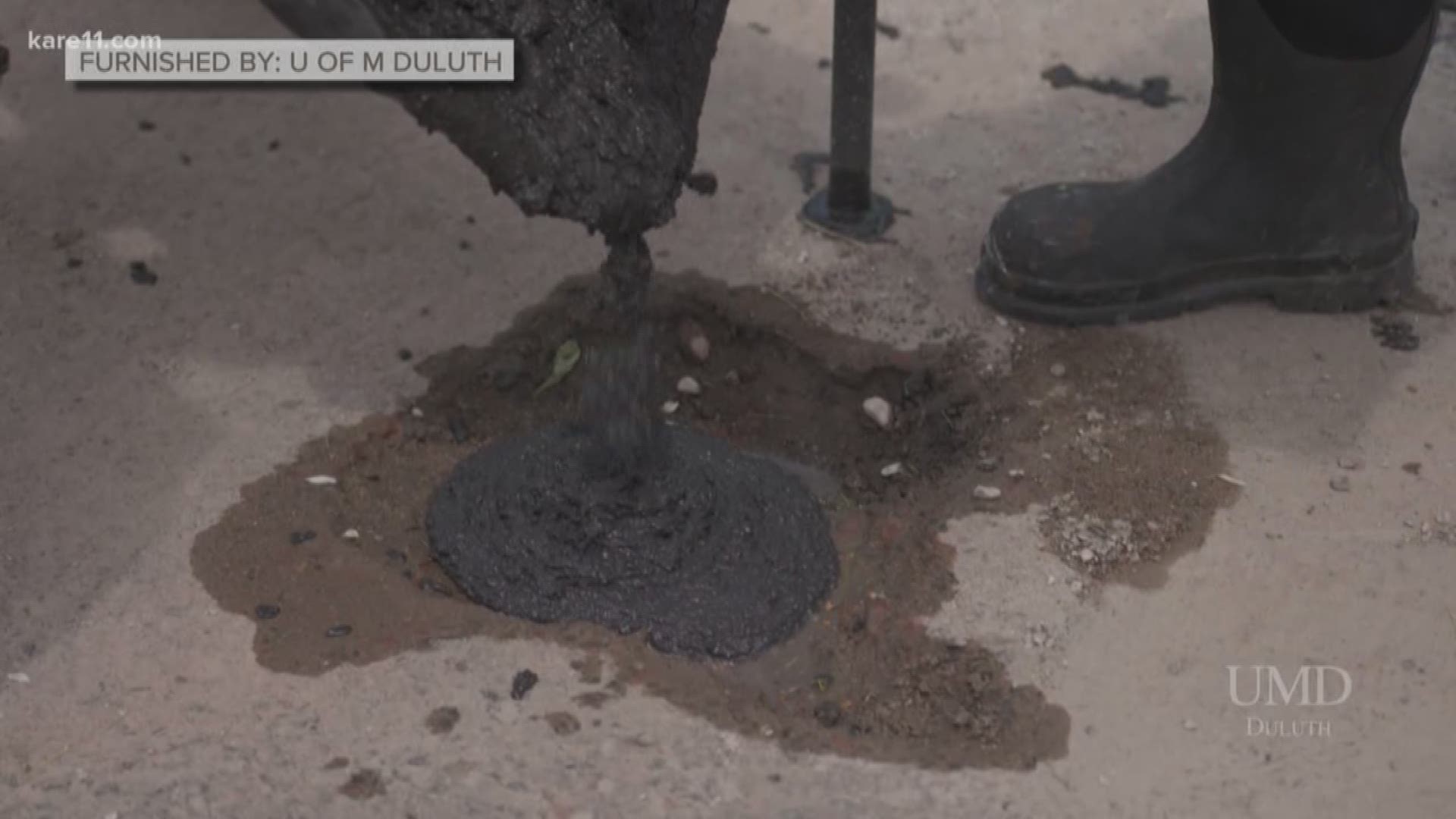DULUTH, Minn. — A long winter has led to a bumpy spring. Potholes can be found on roads all across the state. But researchers at the University of Minnesota Duluth have come up with a longer-lasting method to patching up potholes and they're encouraged by recent results.
Larry Zanko, senior research program manager at UMD's Natural Resources Research Institute, said the rapid patching material is made up of mostly taconite tailings. Zanko described it as "iron cement."
"The idea is to come up with something that's a lot more long-lasting, durable and a crew can go in to do the repair, move on and not have to go back and do it again within days or a week or so," Zanko said.
Zanko said the goal is to only have to visit the same spot once per season.
In the fall, city crews tried out a few formulations on Truck Center Drive in Duluth.
Thursday morning, Zanko met with reporters to see how well those pothole patches held up.


"Coming out here, seeing this. I guess overall I'm satisfied but I know that we can do better," Zanko said.
Two of the patches held up pretty well but one mostly wore out. They'll have to wait to see how the fourth patch held up as it's still covered in snow.
Zanko said they tested out 3-4 different formulations.
"In general, the main components, about 90 percent of them are the taconite-based materials. The other 10 percent is the stuff we kind of adjust," Zanko explained.
The next step is figuring out why some mixtures held up better than others.
Regarding the repair that held up the best, Zanko said, "I think it did well because... we experimented with a few different additives that I think are kind of unique that added some resiliency to that repair that the other ones that lacked that material didn't have."
Zanko said they will do more field trials but he's hopeful some cities could be using this method to patch up small batches of potholes within a year.

